-
Posts
12430 -
Joined
-
Last visited
-
Days Won
554
Content Type
Profiles
Forums
Events
Everything posted by Fiery
-

GPGPU Benchmark hangs at 32-bit Integer IOPS
Fiery replied to wwcanoer's topic in Benchmarking, system performance
It means the issue caused by a bug in the OpenCL compiler which is part of the OpenCL driver which is part of the video driver for your GPU. Try to update your video driver, it should help.- 4 replies
-
- hangs
- GPGPU Benchmark
-
(and 1 more)
Tagged with:
-

fixed: Bay Trail-M active memory channels (Lenovo S20-30)
Fiery replied to P.J's topic in Bug reports
1) Yes, but it's still not the utilization of the GPU. GPU is a hardware component, and the listed items are software components. AFAIK it's not possible to measure GPU load on Intel GPUs. 2) Are you sure it's only one 2 GB chip soldered to the motherboard of your system? Anyway, it's best to simply run the AIDA64 Cache & Memory Benchmark, and see how the memory can perform. If it can push more than 10667 MB/sec (while running at DDR3-1333 speed grade), then it's definitely using a 2-channel configuration. -
Previous AIDA64 versions didn't have the compatibility / supportedOS tags in the application manifest. We've had to add them to properly support Windows 10. However, by adding them to the manifest, it seems Windows drivers behave differently. Apparently Intel's legacy video drivers cannot handle such situations. We've checked, and it's not just AIDA64. The latest version of OpenGL Extension Viewer simply crashes when you start it under 64-bit Windows 10 with a Clarkdale IGP
-

fixed: Bay Trail-M active memory channels (Lenovo S20-30)
Fiery replied to P.J's topic in Bug reports
1) What GPU-Z shows is not the GPU load, but the Direct3D load. 2) N2830 does support up to 2 memory channels. Do you mean your system utilizes only one memory channel out of the two? -

GPGPU Benchmark hangs at 32-bit Integer IOPS
Fiery replied to wwcanoer's topic in Benchmarking, system performance
Does it hang at the GPU test or CPU test? In other words: left column or right column on the GPGPU Benchmark Panel?- 4 replies
-
- hangs
- GPGPU Benchmark
-
(and 1 more)
Tagged with:
-
Thank you. As it turns out, this is a bug of Intel's Windows 10 video drivers. We've run into the same issue than this gentleman: http://stackoverflow.com/questions/34676697/embedding-manifest-into-the-application-binary-breaks-opengl-2
-
Thank you for the data. The issue will be fixed in the next AIDA64 beta update due in a few days from now. I'll post a message into this topic once the new beta is available for download.
-
Do you know approx. at what RPM your fans are spinning while your computer is not under heavy load (e.g. when you're using AIDA64 or browsing the web), and how many fans are spinning?
-
We've checked all those, but without a luck so far The registers you've mentioned are all zero
-
That is due to a bug in the latest Saitek X52Pro drivers (Version 7.0.47.1). When you install those drivers, the driver installer fails to copy the 32-bit DirectOutput.dll file into the folder under \Program Files (x86)\Saitek. We've checked it, and it seems both the latest driver (7.0.47.1) and also the previous driver (7.0.40.9) have this bug. The last driver that works fine is 7.0.39.0. You can either revert back to the last working v7.0.39.0 driver, or I can send you the 32-bit DirectOutput.dll file that we extracted from 7.0.39.0 driver. But I cannot guarantee the DLL from the old driver would work properly with the newer driver as well.
-

Suggestion: Hard Drive access activity/ process Monitor
Fiery replied to StackOverflow13's topic in Brainstorming
Thank you for letting us and other users know about the resolution. -
I'm afraid we don't have any contact at HP
-
Thank you. Are you using a 32-bit Windows or 64-bit?
-
We've never noticed that as an issue on our test systems so far. Please let me know what video card do you have, which Windows version do you have installed, and the video driver version you've got installed.
-

Suggestion: Hard Drive access activity/ process Monitor
Fiery replied to StackOverflow13's topic in Brainstorming
I'm afraid we don't have any idea about what could prevent your system from providing drive activity statistics to AIDA64 We've done test runs on various Win8.1 systems, but on every system we could monitor drive activity without any quirks. There must be a special configuration setting or a background service/process that causes the issues on your system, but I have no idea what could it be. -
AIDA64 doesn't support setting the number of decimal digits per sensor item, and we don't have plans to enable that. Regards, Fiery
-

ASUS AI-Suite sensors missing (Asus Maximus VIII Impact)
Fiery replied to mrDavid's topic in General Discussion
Thank you for your feedback. The mapping of misc temperatures on your board are: Temperature #1 = T_Sensor1 Temperature #2 = EXT_Sensor1 Temperature #3 = EXT_Sensor2 Temperature #4 = EXT_Sensor3 I'm not sure why they show bogus values sometimes. The only issue I can think of that may cause that is a background process or service that concurrently monitors sensors. The most infamous of those is Asus AI Suite that is still not synchronized with 3rd party monitoring software like AIDA64, HWMonitor, SpeedFan, CoreTemp, HWiNFO, SIV, etc. While those listed software are all synchronized with each other to avoid such collisions due to concurrent sensor access. As for the extension fans, I'm afraid those are only available via EC banked access. And switching EC banks is dangerous, since when a collision (with e.g. AI Suite) occurs during an EC bank switch operation, the system could lock up or the CPU might get overvolted -
Yes, that's to prevent you from losing a column If you set one to zero width, it will revert back to the default width the next time you open the System Stability Test.
-
It is not an option, but a small new feature. AIDA64 will now remember the column widths of the statistics list on the Statistics page of the System Stability Test.
-
Thank you for the feedback
-
We've implemented advanced support for Samsung 950 Pro SSDs with the factory default Windows NVMe driver (StorNvme) installed in the latest AIDA64 Extreme beta update: http://www.aida64.com/downloads/latesta64xebeta In case you haven't installed the Samsung NVMe driver yet, please let me know how it works
-

Aquastream XT Ultra not full supportet?
Fiery replied to Masterofpuppets's topic in Hardware monitoring
The above mentioned new AIDA64 beta update is available for download at: http://www.aida64.com/downloads/latesta64xebeta -

ASUS AI-Suite sensors missing (Asus Maximus VIII Impact)
Fiery replied to mrDavid's topic in General Discussion
The above mentioned new AIDA64 beta update is available for download at: http://www.aida64.com/downloads/latesta64xebeta -
The above mentioned new AIDA64 beta update is available for download at: http://www.aida64.com/downloads/latesta64xebeta
-
High variation between various CPU readings is absolutely normal, and you shouldn't worry about it that much.


